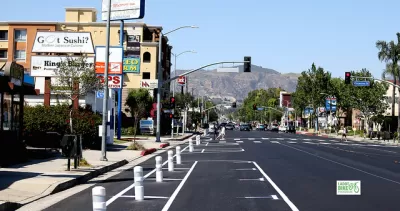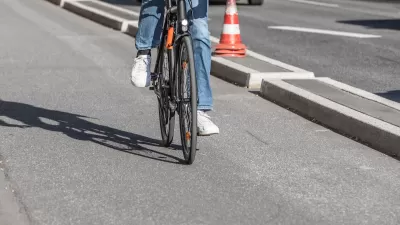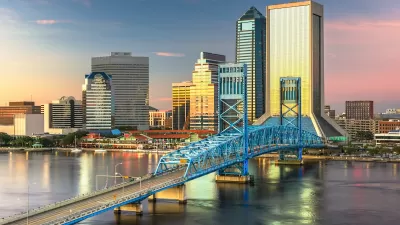The agency’s detailed list of actions highlights the many changes needed to truly implement Complete Streets principles into California road construction and maintenance.

The California Department of Transportation has issued a Complete Streets Action Plan detailing the efforts the agency will undertake to promote more equitable and safe transportation. As Melanie Curry reports for Streetsblog California, “The actions are categorized into general areas such as data collection, policies, and guidance, and includes which division or district is responsible and when the task is to be completed. This action plan focuses on tasks to be done within 2022 and 2023.”
In an introduction to the plan, Caltrans director Tony Tavares writes, “As a Department, we recognize that investments in walking, biking, transit, and passenger rail can produce meaningful and transformative projects that can help to address legacy impacts on underserved communities that have been historically segmented and harmed by our state’s transportation network.”
According to Curry, actions planned for 2022 include “Developing minimum expectations for complete streets facilities,” “Developing an active transportation benefit/cost tool that can be used for project evaluations statewide,” and “Creating a database of active transportation projects on the state highway system that are ready for funding.” Because Caltrans districts across the state are at different stages in developing their Complete Streets plan, the document outlines different actions based on a district’s specific needs.
Curry notes that “some of the tasks are extremely basic first steps towards building capacity at Caltrans to make this policy switch,” pointing out that “The detailed task list also shows just how far the state needs to go before Caltrans can claim that Complete Streets are fully incorporated into its work.”
FULL STORY: Caltrans’ Plan for Making Complete Streets a Priority

Planetizen Federal Action Tracker
A weekly monitor of how Trump’s orders and actions are impacting planners and planning in America.

Restaurant Patios Were a Pandemic Win — Why Were They so Hard to Keep?
Social distancing requirements and changes in travel patterns prompted cities to pilot new uses for street and sidewalk space. Then it got complicated.

Map: Where Senate Republicans Want to Sell Your Public Lands
For public land advocates, the Senate Republicans’ proposal to sell millions of acres of public land in the West is “the biggest fight of their careers.”

Maui's Vacation Rental Debate Turns Ugly
Verbal attacks, misinformation campaigns and fistfights plague a high-stakes debate to convert thousands of vacation rentals into long-term housing.

San Francisco Suspends Traffic Calming Amidst Record Deaths
Citing “a challenging fiscal landscape,” the city will cease the program on the heels of 42 traffic deaths, including 24 pedestrians.

California Homeless Arrests, Citations Spike After Ruling
An investigation reveals that anti-homeless actions increased up to 500% after Grants Pass v. Johnson — even in cities claiming no policy change.
Urban Design for Planners 1: Software Tools
This six-course series explores essential urban design concepts using open source software and equips planners with the tools they need to participate fully in the urban design process.
Planning for Universal Design
Learn the tools for implementing Universal Design in planning regulations.
Heyer Gruel & Associates PA
JM Goldson LLC
Custer County Colorado
City of Camden Redevelopment Agency
City of Astoria
Transportation Research & Education Center (TREC) at Portland State University
Camden Redevelopment Agency
City of Claremont
Municipality of Princeton (NJ)





























